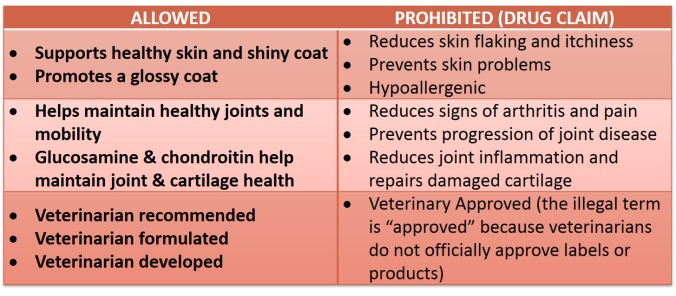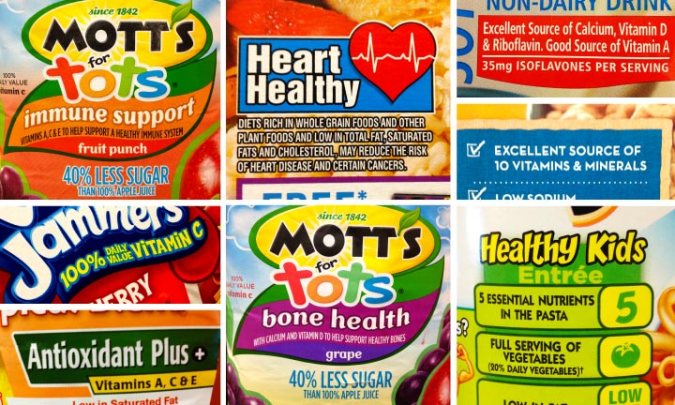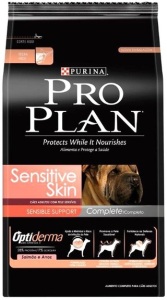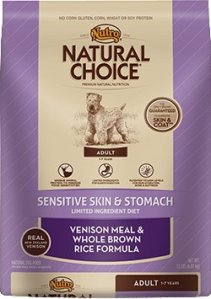Marketing researchers know a lot about advertising strategies that successfully increase sales. This is no less true for pet foods than it is for any other consumer goods. Some of the more obvious approaches to attracting dog owners to a particular brand are advertisements that appeal to our emotional attachment to dogs, capitalize on our desire for expert approval, or that exploit our fascination with the lives of celebrities.
Appeal to Emotion Appeal to Authority Appeal to Celebrity
One of my personal favorites of the “I love celebrities” category is an ingenious brand of Nestle’-Purina’s in which the celebrity to whom the product refers, supposedly a famous chef, does not, um, actually exist…….
The Ad: It’s not just dog food. It’s Chef Michael’s. Crafted with great care, attention to detail and inspiration from our executive chef”
The Disclaimer: In the spirit of full disclosure (and to avoid litigation), the company provides the following response to inquiries about the whereabouts of the personage who is Chef Michael: “Chef Michael is not a real person, but a reflection of the many people inspired to make mealtime special for their dogs”. I dunno. I think I would still like to get the guy’s autograph.
So, pick your poison – there is a dog food advertising campaign out there designed to appeal to just about every dog owner demographic. And, even though each and every one of us will insist that these schemes do not work on us (and that we select a dog food based solely upon its nutrient content, ingredient quality and suitability for our dog, thank you very much), these campaigns do indeed work very well.
Marketing’s Holy Grail: One category of advertising claims that has been shown to work particularly well, increasing human and pet food sales more than any other, are health claims. Because of the cumulative effects of a series of three laws that were passed in the 1990’s, the regulatory oversight of health claims on foods has been drastically curtailed over the last 35 years. Over time, the loss of regulatory oversight over health claims in human foods has led to labels that look like this:
Dog foods quickly followed suit. And pet foods are no different. As it stands today, pet food companies may include general health claims on their labels with no legal obligation to substantiate those claims. In other words, they neither have to prove the claim nor provide any evidence supporting the claim to any regulatory agency. Marketers must simply word their brand name or advertisement carefully enough to prevent the FDA from considering it a drug claim (which are regulated).
The difference between a general health claim (allowed and no proof needed) and a drug claim (not allowed; regulated by FDA) for pet foods turns on just a few words and phrases, as shown in the table below from Dog Food Logic.

TABLE EXCERPTED FROM “DOG FOOD LOGIC“, by Linda P. Case, page 175
Here are a few product examples:
Might these health claims be confusing to pet owners? A recent study asked exactly that question.
The Study: A group of researchers at Tufts University’s Cummings School of Veterinary Medicine examined the nutrient profiles and ingredients list of 24 brands of dog food that all were marketed for skin and coat health (1). The objective of their study was to identify consistencies (or inconsistencies) among different commercial products making claims of promoting skin and coat health in dogs.
Results: They examined 15 dry (extruded) foods and 9 canned foods, representing 11 different brand names. Here are their results:
- Its all in the name: All 24 products included the terms skin, coat plus a descriptor of skin/coat health in their brand name. They also included additional health-related terms on their labels and on websites. The most commonly used were sensitive, skin sensitivities, digestive sensitivity, digestive health, and limited/unique ingredients.
- Ingredients: If you had thought there would be a handful of specific ingredients that are known to be beneficial to skin and coat, think again. The protein sources in the 24 foods were all over the map and included chicken, fish, egg, venison, beef, pork, duck, lamb, soy, peas, and turkey. A similar cornucopia was found for carbohydrate sources, with rice, potato, wheat, oats, barley, millet, corn, quinoa and tapioca all making an appearance.
- Not so special fatty acids: Thirteen of the 24 foods (54 %) identified fatty acids as nutrients that are important for skin and coat health. While this may be true for certain specific omega-6 and omega-3 fatty acids (and their ratios), 10 of the 13 foods did not identify these by name but instead used vague (and meaningless) terms such as “omega fatty acids” or “omega oils”. Less than a third of the foods provided information about the amount of any specific fatty acid in the food. When this information was provided, the range in EPA and DHA (two important omega-3 fatty acids) concentrations overlapped with those found in foods not labeled for skin/coat health.
- More nothin’ special: The essential nutrient content and caloric density (number of calories per cup) of the 24 foods varied enormously and overlapped with other brands that are sold for adult dogs but which are not specifically marketed for skin health. (In other words, not to put too fine a point on it, there was nothing that was consistently special or unique about the nutrient content of these foods. Even omega-3 fatty acid concentrations were all over the map, making the claims of “Source of Omega-3 Fatty Acids” essentially useless to consumers).
Conclusions: The researchers were rather circumspect in their conclusions, stating that the wide variety of ingredients and large range in nutritional value of products marketed for skin and coat health make product selection for owners who are interested in these foods confusing. (Personally, I go further than “confusing”).
Up on My Soapbox: I could be wrong, but I rather doubt that a concerned owner, whose dog is experiencing skin or coat problems and who sees a food that is specifically labeled “Sensitive Skin“, stops and ponders: “Well, the company does not actually state outright that this food cures sensitive skin problems. Nor do they say that they have proven that the food supports healthy skin. Therefore, I know better than to expect this food to do much of anything at all to help my dog”.
I may be going out on a limb here, but I believe this owner is much more likely to be thinking “Oh, look! A food that is designed to help Muffin’s sensitive and itchy skin! I will give it a try because poor Muffin’s skin has been terribly bad lately. I bet this food can help her!”. Ka-ching. Another day, another unregulated and misleading pet food claim, another sale. Poor Muffin.
Take Away for Dog Folks: If your dog is continually or excessively itchy or has skin problems, please make a visit to your veterinarian, not to your local pet supply store. It is important to obtain an accurate diagnosis for skin problems because the majority of these are not related to food. Rather, the most common causes of excessively itchiness in dogs are allergies to environmental allergens such as house dust mites, pollens and molds or fleas. Only after these causes have been eliminated should food be looked at as a potential underlying cause. (Note – The diagnosis of food allergy can only be made through the use of an 8 to 10 week elimination feeding trial, which is a topic for another blog at another time).
(By the way, if you find Chef Michael, get an autograph for me).
Cited Reference: Johnson LN, Heintze CR, Linder DE, Freeman LM. Evaluation of marketing claims, ingredients, and nutrient profiles of over-the-counter diets marketed for skin and coat health of dogs. Journal of the American Veterinary Medical Association 2015; 246:1334-1338.
Interested in Learning More about Canine Nutrition? Take a Look at the new Science Dog Course!
“Basics of Canine Nutrition”











I used to to work at a cat hospital and the one food advertisement that I always found upsetting is all the cat food marketed as “For Urinary Tract Health”. People with male cats straining to urinate- a life threatening emergency- would try “urinary tract health” food instead of going to the vet. By the time they get to the vet they are faced with the choice of a very expensive hospital stay or euthanasia and a cat who has been suffering terribly. Very sad.
LikeLike
Hi Tonna, Thanks for your comment. This is an apt (and horrifying) example of how health claims on foods are misleading to pet owners and can lead to attempts to self-diagnose a problem in a pet, causing unnecessary suffering and distress. I agree – very sad and should be prohibited.
LikeLike
Of curse we have John B Watson, the famous originator of Behaviorism to thank for such advertising 😦 “He believed that in order for advertising to be effective, it should appeal to three innate emotions: love, fear and rage,” and ‘Watson’s “…ads sold toothpaste, not because of its dental hygiene benefits, but because whiter teeth would presumably increase an individual’s sex appeal” ‘. (from psychcentral, “the-psychology-of-advertising”.)
LikeLiked by 1 person
Freudian slip? (of COURSE I meant to write ‘og course’ 🙂
LikeLiked by 1 person
🙂
LikeLike
Pingback: Dog Food Marketing – Science Weighs In | ...
I work with therapy dogs and teams primarily, and am the go-to gal for canine questions at my work, but am far from an expert. I love your blog and recommend it to everyone – everyone seems to be an expert these days, so I really admire that you are a fact-driven voice of logic in the emotional world of dog advocates. You are readable for both new dog parents (or whatever the current politically correct term is these days), long-time pet owners, as well as experts and the rest and us dog geeks. Please keep writing and educating us!
Jackie Gunby
Pet Partner Team 41155
Pit Bulls in Crime – Salvador & Hurdy Gurdy
LikeLiked by 1 person
Hi Jackie – Thanks for your comment and kind words. I am so glad that you enjoy The Science Dog and find it helpful in your work with therapy dogs! Love the phrase “dog geek” – count me in with that group! Thanks for all that you do to help dogs and their people. Linda
LikeLike
Well, yes, many of us concerned dog owners do indeed stop and ponder, and we flip the pack over to read the ingredients. Personally, I like a very basic dog kibble with just a few quality ingredients so that I can add my own cooked ‘stews’ and specific extras. Actually, I mistrust ANY food label – human or animal – with more than five or six ingredients.
LikeLiked by 1 person
I prefer to start with fresh raw meat, And THEN add my own ingredients 🙂 Not forgetting about their daily bone. (Roo Tails preferably. Pigs trotters. Turkey necks. Chicken necks for the 15 year old 🙂 I’d use lamb necks more often but my dogs don’t DO lamb very well.
LikeLiked by 1 person
Unfortunately, I cannot get my fussy old guy to eat raw. He’ll accept the odd meaty bone, but a meal composed of raw meat has him giving me the stink-eye! I’ve tried several times.
LikeLike
I’ve ad only one dog that refused to eat raw 😦 He was my own pup (or rather my own bitch’s pup) and I ad been told that pups should be weaned onto cooked meat — because of dangers of salmonellas, etc. I got sick of cooking HIS meat especially since his Mum preferred raw, so I decided that I would last him out. By the time he started looking like a Biafran, I gave up and cooed his meat again.
All later pups have been weaned onto raw meat with NO signs of problems 🙂
LikeLike
Haha! Yes, that sounds like my boy. And as he’s an older dog and a greyhound, I can’t let him lose too much weight.
LikeLiked by 1 person
Hi Jay – Thanks for your comment. While I agree completely that reading labels is important, I would argue that labels (both human and pet food) do not provide enough relevant information to consumers that allow us to make truly informed choices about food quality. (I talk about this quite a bit in Dog Food Logic). And, as the study discussed in this essay shows, labels can also, intentionally or not, mislead people. While feeding homemade can be a great way to go (and it sounds like you are doing a great job with it), it remains true that the majority of pet owners buy commercial foods. Therefore, companies (and regulatory agencies) need to do better in terms of providing accurate and helpful information about these foods. Thanks for reading and for participating! Linda
LikeLiked by 1 person
Yes, one must certainly read labels from an informed point of view (knowing what ‘mechanically recovered meat’ means, for instance, or even just ‘meat’), and yes also to the fact that labels do not provide enough information. I have a long history of allergies and intolerances and a lot of practice in reading and understanding what labels say and what they don’t say, unfortunately. Some of my allergens don’t even get included in the ‘allergens written in bold’ rule! Palm oil is a big issue for me at the moment.
It’s interesting that if you buy canned dog foods from certain European countries, they say exactly what they contain. As an example, they will tell you if the beef or chicken etc is muscle meat, and what percentage is offal and what type.
LikeLiked by 2 people
I got this email today from Dogster.
“Dear Pet Parent,
Your dog may eat his poop, chew on grass, lick dirt, or scratch and chew on himself (a sign of allergies).
Regardless of WHY your cute furry baby is actually doing these really gross things, the truth is very simple…
Your dog’s body is craving something your aren’t giving him!
The good news is, all you need to do is just add this one thing to your dog’s current diet and the results will astound you.”
The link is hilarious.
https://trudog.com/lp/boost-me/?utm_source=Dogster&utm_medium=Email&utm_content=&utm_campaign=DogsterBoostMe
or just Google trudog
Surely this must break advertising regulations?
LikeLike
Maybe not! it was SO boring I suspect that most people will turn it off before they even get to the point of it. I stopped at recommending organ meats — but DID check that t was still just writing.
LikeLike
Pingback: Are There Benefits of Insect-Based Dog Foods? | The Science Dog
Pingback: What Is The Environmental Impact Of Pet Food? - The Green Pet Guide